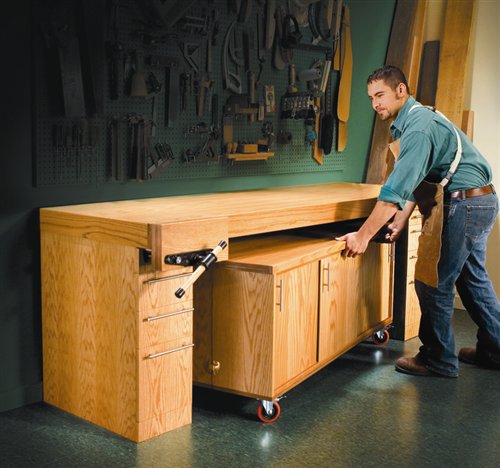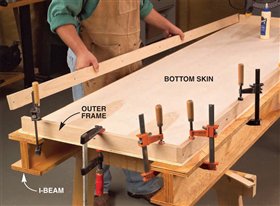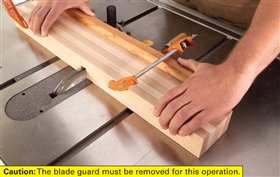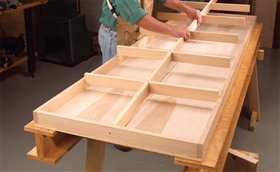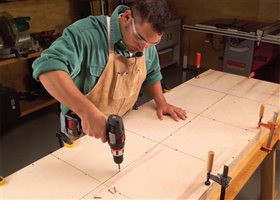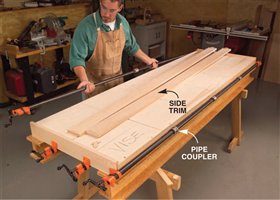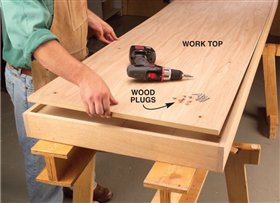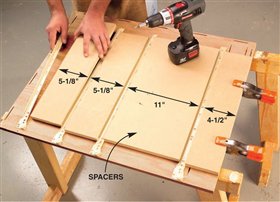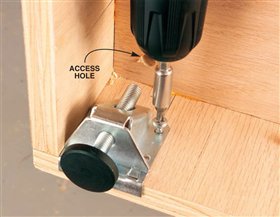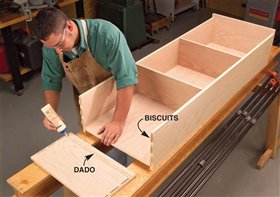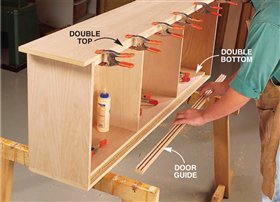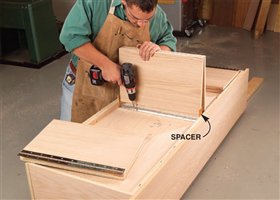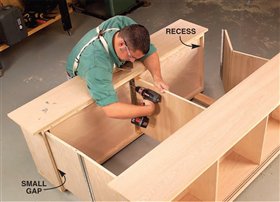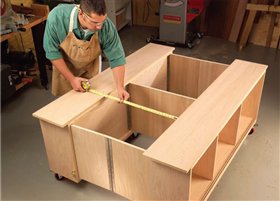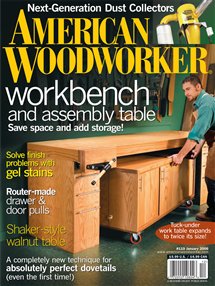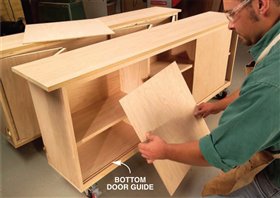We may receive a commission when you use our affiliate links. However, this does not impact our recommendations.
Torsion-Box Workbench and Expandable Assembly Table
Double your work space without doubling your shop space.
By Randy Johnson and Luke Hartle
|
In our shop, we used to pile tools, parts and hardware on top of a wobbly workbench made from 2x4s. When we had to glue a project together, we shoved everything aside. Finally, we got tired of searching for tools and space and set out to make a new style of workbench. Our new workstation is two benches in one. The best part is a rolling storage unit that opens into a huge assembly table. Closed, it tucks right under the bench. We built the bench’s top as a torsion box, so it can span the distance over the assembly table without sagging. Both parts are made from home-center materials using simple joinery. Two work surfaces, lots of drawers and shelves—what a great excuse to buy more tools. |
You may also like… |
The Workbench
|
A torsion box is composed of two sheets of plywood, or |
|
Cut the bridle joints on the inner torsion-frame parts with a |
|
Test-fit the inner torsion-frame assembly. It should slip into |
|
Flip the assembly and screw the bottom skin to the |
|
Glue the trim boards to the torsion box. Install them |
|
Install the work top. Screw it to the torsion box and use |
|
Use spacers to position the drawer slides for mounting to |
|
Add levelers to the base cabinets if your shop floor is |
The Expandable Assembly Table
|
The assembly table is composed of two identical cabinets. Joinery |
|
Glue and clamp the door guides to the doubled-up top |
|
Install the hinged panels to the back of one cabinet, |
|
Attach the hinged panels to the back of the second cabinet. |
|
Install the wheels. The center wheels provide support for |
|
Measure for the removable top. You want the top to fit |
|
Slip the sliding doors into the slotted guides. The doors This story appears in American Woodworker January 2006, Issue #119. |
Purchase the complete version of this woodworking project story from AWBookstore.com. |
Here are some supplies and tools we find essential in our everyday work around the shop. We may receive a commission from sales referred by our links; however, we have carefully selected these products for their usefulness and quality.



